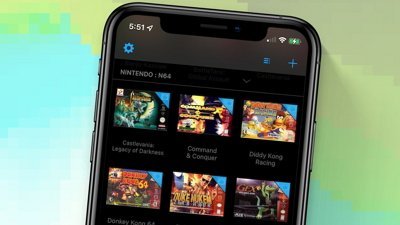Adobe caves, adds support for Apple's HTTP Live Streaming standard
Adobe first broke the news in a blog post offering a sneak peak at the company's new streaming video features, as noted by Ars Technica. The new feature was also previewed by the company at the National Association of Broadcasters trade show this week in Las Vegas.
In addition to Adobe's own HTTP Dynamic Streaming standard, which uses H.264/AAC codecs and the F4F file format, future versions of Flash Media Server will now support the HTTP Live Streaming protocol developed by Apple.
According to Kevin Towes, product manager for Adobe Flash Media Server, the company "is reducing the publishing complexity for broadcasters who need to reach browsers supporting HLS through HTML5 (such as Safari) or devices where Adobe Flash is not installed." Devices with Flash installed will continued to use MPEG4-fragments to stream video over HTTP to Flash.
In a video demonstration posted to YouTube, Towes live streams a video to an iPad 2 using Safari and an HTML5 page, as well as on a Mac using Safari and Adobe Flash 10.2 and a Motorola Xoom tablet.
HTTP Live Streaming
Apple first adopted HTTP Live Streaming in version 3.0 of iPhone OS in 2009, though the protocol was leaked in May of that year when Apple submitted the standard to the Internet Engineering Task Force.
The live streaming protocol replaces Apple's older QuickTime Streaming Server protocol with an efficient streaming protocol that divides broadcasts into short ten second clips and sends them along an MPEG transport stream without requiring the use of special servers. Servers are able to store multiple versions of clips in different formats, allowing users to dynamically scale streams up or down depending on available bandwidth.
Last year, Apple leveraged HTTP Live Streaming to resume the practice of offering live streams of media event keynotes, which it had stopped in 2005.
In February 2010, an Israeli technology company sued Apple over the Live Streaming technology, alleging that the Cupertino, Calif., company had violated its own media streaming patents from 1999.
Adobe v. Apple
With sales of Apple's iPad and iPhone continuing to gain steam, Adobe's hand appears to have been forced. As such, Adobe's announcement has been taken by some to be a small victory on Apple's part in a heated clash between the two companies.
Last year, Apple CEO Steve Jobs sparked a war of words with an open letter criticizing Adobe and Flash.
In the letter, Jobs defended Apple's decision not to support Flash on the iPhone, iPod touch and iPad. Jobs specifically referred to six weak points for Flash: openness; the "full Web;" reliability, security and performance; battery life; touch; and the substandard quality of third-party development tools
Adobe CEO Shantanu Narayen quickly responded, calling the issues raised in Jobs' letter a "smokescreen" and shifting the blame for crashes on the Mac from Flash to Mac OS X.
Apple had drawn criticism for updating the iOS 4 Software Development Kit to ban intermediary tools, such as a feature in Adobe's Creative Suite 5 that would port Flash software to the iPhone.
In September last year, Apple removed the ban, as long as the resulting apps do not download any code. Adobe quickly responded by announcing that it would resume development of its Packager for iPhone tool.
 Josh Ong
Josh Ong










 Malcolm Owen
Malcolm Owen
 William Gallagher and Mike Wuerthele
William Gallagher and Mike Wuerthele
 Christine McKee
Christine McKee
 William Gallagher
William Gallagher

 Marko Zivkovic
Marko Zivkovic









